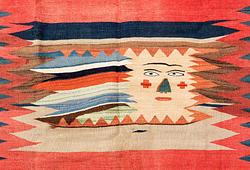Bruno Liljefors
Fox on the hunt
Signed Bruno Liljefors and dated 1892. Oil on canvas 41 x 56 cm.
Provenance
Consul Erik and Mrs. Lisa Brodin's Collection, Stockholm.
Captain of Cavalry Olof Brodin's Collection, Stockholm.
Thereafter by descent.
Exhibitions
Liljevalchs konsthall, Stockholm, "Bruno Liljefors Minnesutställning 1860 - 1960", 30 September - 30 October 1960, cat. no. 79.
More information
The years around 1890 were significant for Bruno Liljefors. He had already made his mark as an artist earlier in the 1880s, but this position was further strengthened by a 2nd class medal at the Paris Salon and a gold medal at a collective exhibition in Munich in 1889. A further recognition was that Liljefors was appointed to replace Carl Larsson as a teacher at the Valand Art School in Gothenburg during the period 1888-89. This was also an important time artistically.
Liljefors began to leave behind the influence of Japanese art with a cropped main subject dominating the foreground while the background played a secondary role. Instead, Liljefors began to take an interest in the surrounding nature and depicted it with the same sharpness as the animals and people. This change can be traced back to Liljefors' passion for photography. In 1889, Peter Henry Emerson published his highly acclaimed book “Naturalistic Photography For Students of the Art”.
Liljefors was not only an artist, but also an observer of animal life and movement. His ability to reproduce the anatomy of animals and the way they interact with nature, as well as to portray nature from their perspective, made his works both realistic and dramatic. This artistic approach made him a leading figure in the Nordic art world, and his works have continued to be appreciated for their unique blend of scientific rigour and artistic poetry.
Artist
Bruno Liljefors is the Swedish artist best known for his nature and animal motifs, especially in dramatic situations. Liljefors started with studies at the Academy of Arts in 1879, and continued 1882 in Düsseldorf where the studies revolved around animal painting. The journey then continued to Venice, Rome, Naples, Paris and Grez. Once back in Sweden, he began to draw and paint animals, especially cats and small birds, from the beginning in intimate interaction with nature. He then moved on to broader depictions of wild animals and nature, of seascapes with seabirds and of dramatic scenes of battles between birds. Liljefors is known as our country's foremost animal painter with a large production. Liljefors depicted, in contrast to the "idyllic" animal painting, the animals everyday life with a focus on movement, anatomy and their adaptation to the landscape. This is where the greatness of his painting lies, in the ability to show the animals in their proper environment. He has achieved this by hunting and observing. Well-known works of art are the paintings "Rävfamilj" (1886) and "Havsörnar" (1897), as well as the sculpture "Lek" (1930) at Stockholm Stadium. Liljefors is mainly represented at the National Museum, Waldemarsudde and the Thielska gallery in Stockholm.
Read more














































